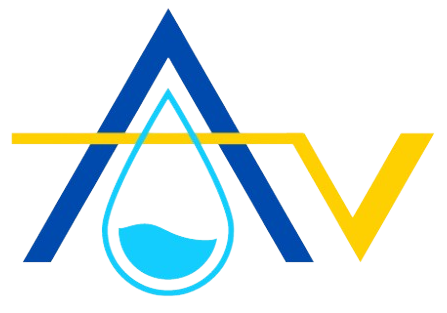EPOXY vs Bituminous Waterproofing: What Are the Differences?

EPOXY waterproofing and bituminous waterproofing are two types of most used waterproofing membranes, which are used to protect buildings from water and moisture penetration. To choose the right type of the waterproofing membrane, you should know the differences between them before you apply.
So as waterproofing experts, Aqviz, we prepared a complete comparison guide by considering the EPOXY vs bituminous waterproofing. We have included main differences in material composition, water resistance, breathability, flexibility, chemical resistance, and UV resistance. As minor differences, we included adhesion, tear resistance, seam integrity, root penetration resistance, eco-friendliness, fire resistance, anti-slip resistance, toxicity and self-expanding capability.
Material Properties Comparisons Between EPOXY and Bituminous Waterproofing
These are the material composition, performance, durability, and environmental resistance comparisons between EPOXY and Bituminous waterproofing
- EPOXY waterproofing is a two component mixture of epoxy resin and hardener , while bituminous waterproofing is a petroleum-based bitumen-derived membrane.
- EPOXY waterproofing and bituminous waterproofing are both highly water resistant membranes.
- EPOXY waterproofing membranes are not breathable , while bituminous waterproofing has a lower breathability
- EPOXY waterproofing is not flexible while bituminous waterproofing has a higher flexibility.
- EPOXY waterproofing has an extremely higher chemical resistance than bituminous waterproofing.
- Standard EPOXY waterproofing has a higher UV resistance than bituminous waterproofing.

Composition Difference Between EPOXY and Bituminous Waterproofing
EPOXY waterproofing is a two component mixture of epoxy resin and hardener, while bituminous waterproofing is a petroleum-based bitumen-derived membrane.
EPOXY waterproofing consists of epoxy resin and hardener. Once they mixed together to a recommended proportion, it forms a solid compound. When the epoxy compound cures, it forms a solid, non-porous layer that helps to prevent water leaking through the layer. Epoxy waterproofing is a highly water-resistant, less flexible, higher tensile strength, and highly effective for positive and negative water pressures..
Bituminous waterproofing is a petroleum-based, bitumen-derived membrane. It consists of bitumen, mixed with polymers and reinforced with fabrics or fiberglass to create a flexible and durable waterproof membrane. The petroleum-based nature of bituminous coatings gives them a highly effective waterproofing quality, making them a popular choice for roofs and underground structures.
Water Resistance Difference Between EPOXY and Bituminous Waterproofing
EPOXY waterproofing and bituminous waterproofing are both highly water resistant membranes.
Epoxy membranes offer superior water resistance due to their lower flexibility and high tensile strength. Epoxy waterproofing effectively handles both positive and negative side water pressures.
On the other hand, bituminous waterproofing provides a higher water repellency due to its non-porous, petroleum-based nature. It is excellent for flat roofs, foundations, and underground structures, where continuous exposure to moisture is expected. The key reason for its superior resistance is its hydrophobic (water-repelling) nature, which prevents water absorption and penetration.
There are more than 10 types of waterproofing membranes available for building waterproofing. If you need to know about all of them, read our expert guide about 10 Types of Waterproofing Membranes: Properties, Applications, Pros, and Cons
Breathability Differences Between EPOXY and Bituminous Waterproofing
EPOXY waterproofing membranes are not breathable while bituminous waterproofing has a lower breathability.
Epoxy waterproofing membranes are not breathable due to their seamless, non-porous resin composition. Therefore, epoxy waterproofing is ideal for industrial areas and chemical storage areas. Due to the less breathability, moisture can be trapped on the surface. This causes to blistering of the layer and prolonged water-related problems over time.
Bituminous waterproofing has a lower breathability. It forms a completely sealed, non-permeable layer, preventing both water and vapor from passing through. This characteristic makes it effective for roofing and underground applications, but in enclosed spaces like basements, improper application can trap moisture, leading to condensation issues.
Flexibility Difference Between EPOXY and Bituminous Waterproofing
EPOXY waterproofing is not flexible while bituminous waterproofing has a higher flexibility.
Standard EPOXY waterproofing is not flexible. But some improved epoxy waterproofing can be flexible due to polymer resin compositions. We highly recommend you to use a limited flexible epoxy for the minor movable structure in order to protect the substrate properly.
Bituminous waterproofing is more flexible compared to EPOXY waterproofing. Bituminous waterproofing can withstand structural movements and temperature changes without cracking it due to its flexibility. The bituminous membrane flexibility depends on the polymer content in it. It allows to stretch and contract without losing adhesion. It helps to use bituminous waterproofing on roofs, bridges, and areas with thermal expansion.
Chemical Resistance Difference Between EPOXY and Bituminous Waterproofing
EPOXY waterproofing has an extremely higher chemical resistance than bituminous waterproofing.
Epoxy waterproofing membranes have a superior chemical resistance due to their robust, resin-based formulation. EPOXY waterproofing withstands exposure to harsh chemicals, solvents, and acids effectively. Therefore, epoxy waterproofing is highly recommended for industrial facilities, laboratories, garages, and chemical storage areas.
Bituminous waterproofing offers superior chemical resistance. Especially against salts, acids, and industrial pollutants. The hydrocarbon-based composition of bitumen makes it highly resistant to chemical corrosion, making it an excellent choice for industrial facilities, underground structures, and chemical storage areas. But it can deteriorate when it is exposed to solvents or hydrocarbons.
UV Resistance Difference Between EPOXY and Bituminous Waterproofing
Standard EPOXY waterproofing has a higher UV resistance than bituminous waterproofing.
Epoxy waterproofing membrane has a lower UV resistance. Epoxy waterproofing layer can deteriorate under prolonged sun exposure, leading to discoloration, chalking, and reduced effectiveness due to UV rays. To enhance UV stability of the EPOXY waterproofing, the top coat should be applied.
Bituminous waterproofing has a poor UV resistance. When it is exposed to sunlight, it causes oxidation, brittleness, and surface cracking, reducing its lifespan over time. In order to improve UV protection, a protective layer like aluminum foil, gravel, or a UV-resistant coating is often applied over bituminous membranes. Without this protection, bituminous coatings deteriorate faster, leading to potential waterproofing failure.
Read our similar expert guide related to EPOXY and bituminous waterproofing
- Cementitious vs EPOXY waterproofing
- Arcylic vs EPOXY waterproofing
- Cementitious vs Bituminous waterproofing
- Bituminous vs Polyurethane

Functional and Environmental Impact Comparisons Between EPOXY and Bituminous Waterproofing
These are the mechanical strength, safety, environmental impact, and usability comparisons between EPOXY waterproofing and Bituminous waterproofing.
| Properties | Epoxy Waterproofing | Bituminous Waterproofing |
| Adhesion | Strong adhesion to concrete, metal, and tiles | Good adhesion but may require primer for better bonding |
| Tear resistance | High tear resistance due to rigid structure | Moderate tear resistance but remains flexible |
| Seam integrity | Seamless application, forms a monolithic layer | May have seams in membrane form, requiring careful installation |
| Root penetration capability | Low resistance to root penetration | Better resistance, often used in green roofs |
| Eco-friendliness | Contains solvents, less environmentally friendly | Petroleum-based, less eco-friendly, but some versions are modified for sustainability |
| Fire resistance | High fire resistance, does not ignite easily | Moderate resistance, can catch fire without fire-retardant additives |
| Anti-slip resistance | Smooth surface, may require additives for slip resistance | Naturally textured, offering better slip resistance |
| Toxicity | Can release harmful fumes during curing | Contains volatile compounds, may emit strong odors |
| Self-expanding capability | No self-expansion, remains rigid | Expands and contracts with temperature changes |
